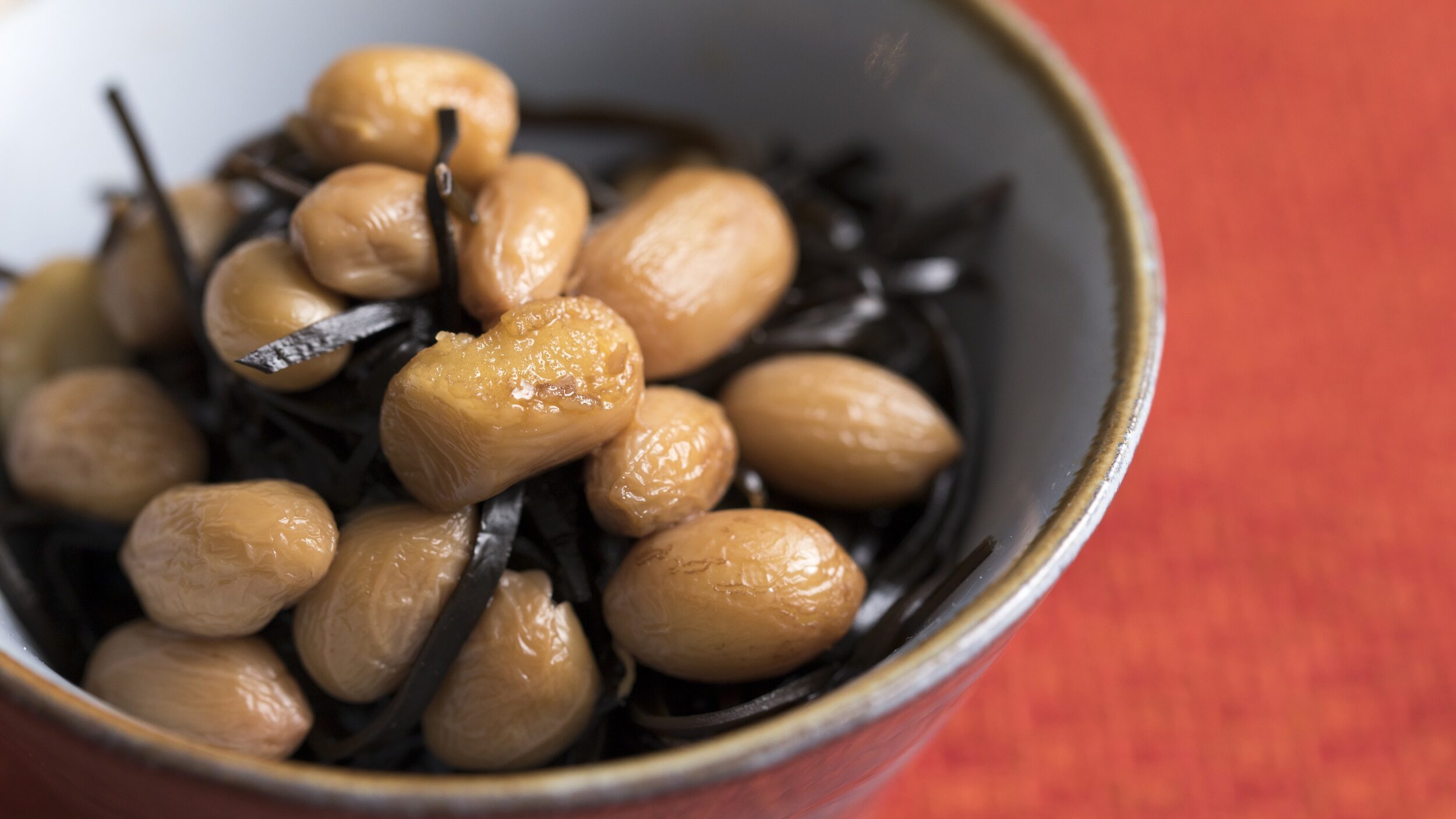
The Atsumi Peninsula in Aichi Prefecture is blessed with nature from both the sea and the mountains. Despite facing water shortages and less-than-ideal soil in the past, the area has flourished agriculturally, especially after the development of the Toyokawa Canal. Peanuts thrive in the sandy soil, and the surrounding seas provide an abundance of seaweed like arame, a type of kelp thicker than wakame. “Arame to Rakkaisei no Nitsuke” is a home-style dish that combines these local ingredients, particularly popular in the Higashi-Mikawa region as a staple side dish.
Dish Name: Arame to Rakkaisei no Nitsuke
- Region / Location: Aichi Prefecture
- Primary Area of Tradition: Higashi-Mikawa region, especially the Atsumi Peninsula
- Main Ingredients: Peanuts, arame seaweed
How It’s Eaten / Served
To prepare this dish, the peanuts are soaked thoroughly, and the arame is rehydrated in water about 30 minutes before cooking. Once both are softened by boiling, they are simmered in a mixture of sugar, soy sauce, and mirin until the flavors meld together. It can be enjoyed both warm and cold. The combination offers a satisfying texture, with the soft and slightly floury peanuts contrasting with the thick and chewy arame.
Cultural Background and Preservation
Arame is typically harvested from July to September, so when using fresh arame, this dish is often made during that time. However, dried arame is widely available, making it a common dish prepared year-round. Its sweet and savory flavor profile and the fact that it keeps well make it a convenient make-ahead dish. As it utilizes locally sourced ingredients, “Arame to Rakkaisei no Nitsuke” continues to be a staple in households across the region.
Additional information:
- Arame: A type of brown algae (Eisenia bicyclis) found along the Pacific coast of Japan. It has a slightly sweet and savory flavor and a firm, chewy texture when cooked. It’s known for being rich in minerals.
- Peanuts (Rakkaisei): The edible seeds of the peanut plant (Arachis hypogaea). In Japanese cuisine, they are used in both sweet and savory dishes.
- Mirin: A type of sweet rice wine used in Japanese cooking. It has a lower alcohol content than sake and adds a subtle sweetness and glaze to dishes.
- Soy sauce (Shoyu): A fundamental seasoning in Japanese cuisine, made from fermented soybeans, wheat, salt, and a fermenting agent. It provides a savory and umami-rich flavor.
The information about regional cuisine featured on this website (Piggy's Grandma of Japan) is summarized and adapted from the Ministry of Agriculture, Forestry and Fisheries of Japan (MAFF) website, "Our Regional Cuisines"Additional commentary is provided based on the unique experiences and perspectives of the site's editors.
The copyright for the original content regarding regional cuisine belongs to the Ministry of Agriculture, Forestry and Fisheries of Japan.
The summaries and adaptations published on this site are intended for informational purposes only. Piggy's Grandma of Japan does not guarantee the accuracy or completeness of this information. For the most accurate and complete details, please refer to the original pages on the MAFF website.

